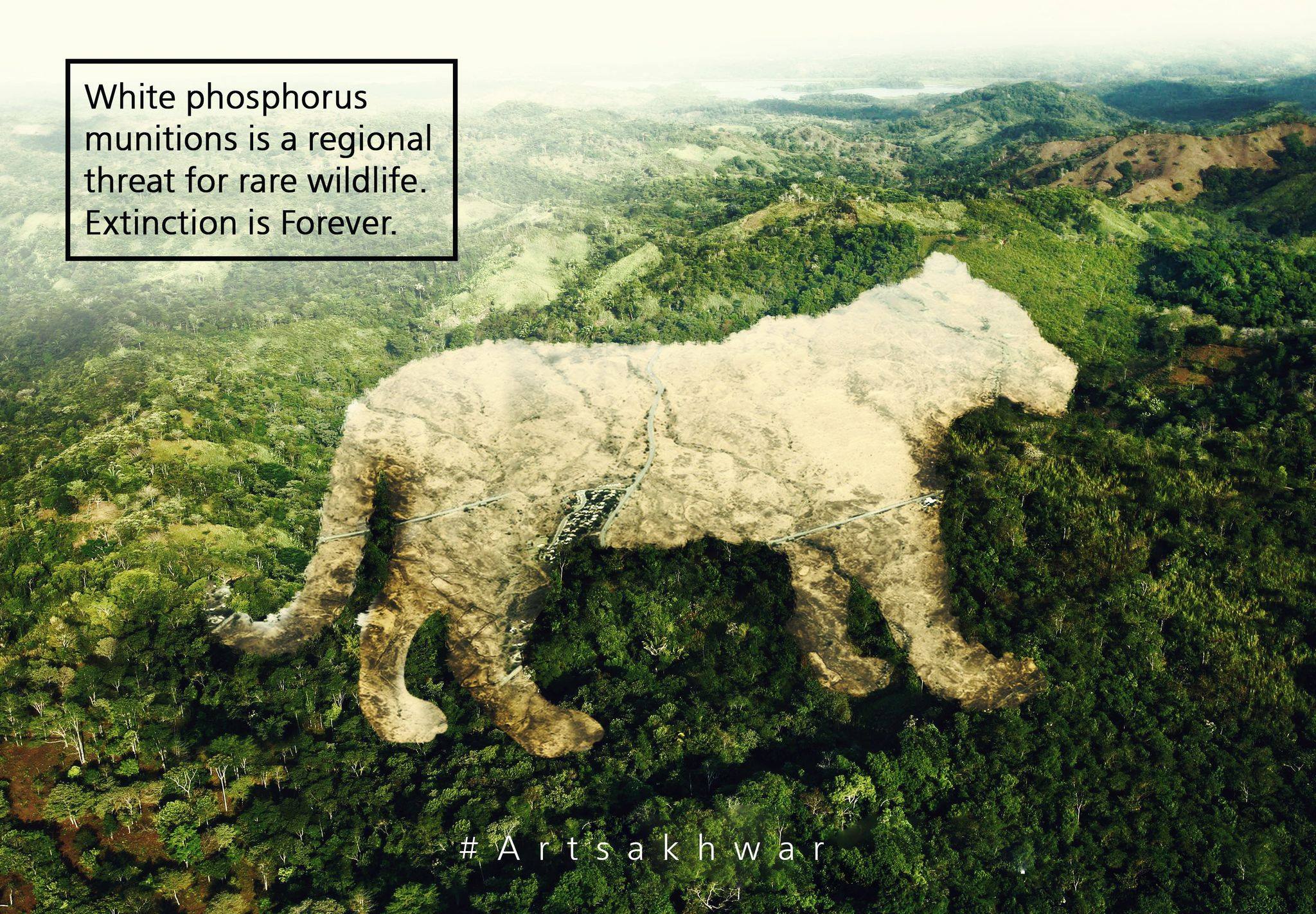
Published on 10/03/2023
Video – https://www.facebook.com/watch/?v=1235422780163662
On Sept. 27th, a full-blown war erupted between Armenia & Azerbaijan over the region of Artsakh in the South Caucasus.
This ongoing war is a major threat for the biodiversity of the region.
Considered one of the world’s hotspot in terms of biodiversity, the region is home to more than 6000 plant species, 153 species of mammals and 400 species of birds. Hundreds of plant and animal species in Artsakh are also listed in the IUCN Red List of Threatened Species.
On October 30th, white phosphorous munitions were used as a chemical weapon over the primary forests of Artsakh. As we know, the use of chemical weapon is internationally recognized as a war crime and its effects on the environment is devastating.
It directly threatens the existence of any living being in the area and the habitats of endangered species of the region, such as the brown bears, the bezoar goats, the mouflons, the lynx, the vultures, the eagles and the Caucasian leopard. This latter is a critically endangered feline at a high risk of extinction in the region.
Armenia & Artsakh are known for their primary forests, which are amongst the most biodiverse forests in the region. Not only these forests play a major role in preserving favorable environmental conditions for sustainable development, but local people are heavily dependent on these forests for their livelihoods. Traditional forest-related knowledge accumulated over thousands of years is deeply rooted in the culture of the indigenous people living in Artsakh.
White phosphorous munitions are dangerous chemical weapon that not only burn crucial habitats and destroy ecosystems, but they also accumulate in soil and rivers, contaminating underground waters for years. Hence they represent a major threat for all the people living in the wider region, including Armenia and Azerbaijan. The usage of phosphorus munitions contradicts the provisions of major environmental conventions such as the Bern Convention, the Nagoya protocol, as well as the Helsinki and Rotterdam conventions, signed by both Armenia and Azerbaijan.
If 98% of the global population live under the protection of the Chemical Weapons Convention, it should also be applicable to the ethnic Armenians living in Artsakh. Nature conservation efforts do not recognize any political borders. Their aim is to sustain life on earth – the only planet we live in. As an organisation dedicated to the preservation of wildlife and cultural assets in Armenia and Artsakh, joined by 50 local partner organizations, we call upon all our partners from the global conservation community to join us in our efforts to condemn the use of phosphorous munitions in the current war which are causing an environmental disaster in the region.
We call on the global environmental organizations to take actions now to prevent a regional ecocide. Wars end, but the right to life should be recognized and respected at a global level for all living beings & all species in the world.
1. Foundation for the Preservation of Wildlife & Cultural Assets (FPWC)
2. Armenian Society of Biologists NGO 3. Eco Waste Environmental NGO
4. Yerevan Aarhus Center
5. Armenia Tree Project
6. Sunchild NGO
7. Strategic Development Agency
8. Solution Hub NGO
9. Green Age NGO
10. American University of Armenia/Harutyun Alpetyan, Waste Governance Expert
11. Environmental Public Society 12. BlEJAN, environmental, social, business support NGO
13. Araves Bird conservation NGO
14. Armenian Environmental Front
15. BEM Youth progressive Action Center
16. Freedom of Information Center of Armenia
17. Institute of Botany after A.Takhtajyan NAS RA
18. World Independent Youth Union
19. Doctor Cinema Youth NGO
20. Amities Luxembourg – Armenie a.s.b.l,
21. Formation et Sensibilisation de Luxembourg
22. Regional Development and Research Center NGO
23. “Econews.am” environmental informative website
24. Public Awareness and Monitoring Centre’ NGO
25. Dingo Team NGO
26. SALU Sensibilité et Attention Luxembourg
27. Caucasus Wildlife Tours
28. Armenian Environmental Network
29. Lab Inclusion (France)
30. Green Armenia Environmental Education NGO
31. White Squad Environmental NGO
32. “Armenian Botanical Society” NGO
33. SwIdeas AB (Sweden)
34. 500 km in Armenia
35. Sunchild Eco – tours
36. BLESK LLC env. assessment org./Armenian Branch
37. “Dalma-Sona” Foundation
38. University of Traditional Medicine, Armenia
39. Armenian Women for Health & Healthy Environment NGO
40. One Health Coalition
41. “EcoLur” informational NGO
42. Clean Goris NGO
43. Country Water Partnership NGO
44. Sustainable Water Environment NGO
45. “Centre for Community Mobilization and Support” NGO
46. Green Lane NGO
47. “Consumers’ Consulting Center” NGO
48. My Forest Armenia NGO
49. “Support of Botanical Garden” Charity Foundation
50. Armenian Forests Environmental NGO
51. ARK Armenia environmental NGO
52. Time land Foundation